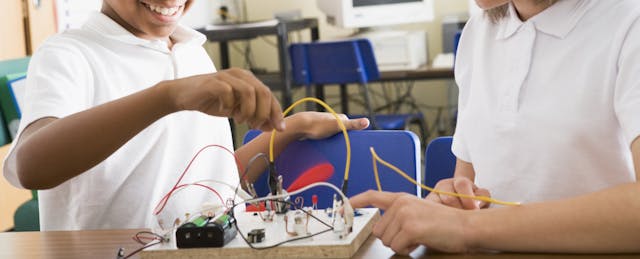In a world where so much knowledge is a two-second search away, many schools are losing interest in models that promote static learning to know. They’re looking to embrace dynamic models that promote learning to do and learning to be.
Project-Based Learning (PBL) allows learners to develop skills by solving meaningful, real-world challenges , i.e. organizing a 5k race to raise money for charity or writing and performing a play on the colonization of Mars.
Recently, Finland redesigned its school system to make PBL a core part of national pedagogy. According to SRI International, students in PBL classrooms achieve higher test grades compared to their traditional counterparts. And in the US, schools that do PBL like the New Tech Network or Acton Academy are rapidly expanding.
Schools all over the world are seeing higher engagement with PBL, and every day more and more schools decide to give it a shot. There’s just one problem. Many schools that start doing Project-Based Learning do not stick with it. Why? Because it’s not easy to get right.
The 3 Challenges
There are three major challenges schools face when implementing Project-Based Learning:
1. Planning a project is a lot of work!
Planning a project requires a different way of thinking than what we’re accustomed to when we plan a traditional class.
We need to think about how to immerse learners into a new world when we “launch” the project. This translates to coming up with the working material, planning specific milestones, connecting different topics, and preparing a final exhibition where learners showcase what they’ve built.
2. It’s very messy and chaotic at first
Having 20 people solve the same problem, in different ways, each at a different pace, is a recipe for chaos.
Project mockups, prototypes, lots of papers and binders. There are often many more physical materials than in a regular class.
Learners are going at their own pace, solving the problem in their own way, and each one of them will have questions about their particular solution. It takes time.
3. It’s hard to assess performance
Hands-on learning is inherently multidisciplinary. By working on a project, you develop skills of planning, collaboration, and could easily mix disciplines like creative writing and mathematics. There’s a lot of teamwork, and it’s hard to be sure who played a role in doing what.
The traditional concept of testing if the students know certain content does not apply here. It’s more about testing if they can do certain things or if they’ve developed skills like being better communicators with their team, or persisting when things got tough.
There are solutions, though
So… What can we do about it? How can we make sure our school succeeds in innovating and implementing Project-Based Learning?
Don’t reinvent the wheel
When it comes to planning your project, don’t start from scratch. There are hundreds of great projects on the web from publications like Edutopia or The Buck Institute for Education.
If you know of another teacher who is already doing PBL successfully, reach out to them asking if they can share one of their projects (along with its planning) with you.
Be patient and stand back
When the chaos of having students solve a problem at their own pace comes to our classrooms, we as teachers need to stand back. It might sound counterintuitive at first, but it’s important to let the students make mistakes and fail, because that’s where real learning takes place. Instead of being the classroom expert, teachers need to play the role of a facilitator.
Use online tools
If your students have access to tech devices in the classroom, be sure to use an online tool that will help you keep track of the progress of each individual student. This will help you make sure that everyone’s learning from the project, and will allow you to figure out who needs help at what time.
Online tools will also help you make parents and administrators part of the beautiful and messy process that takes place when learners get creative.
What now?
Don’t be afraid to make mistakes at first. Ask for help. Eventually, you’ll figure it out and become a Project-Based Learning Rockstar, and your students will love you for it.


